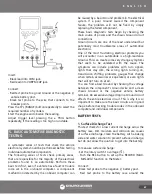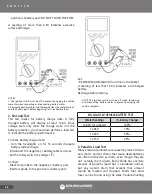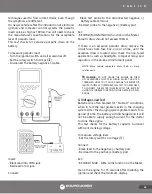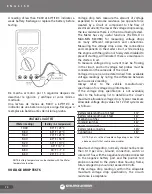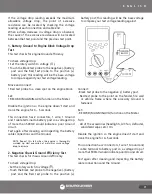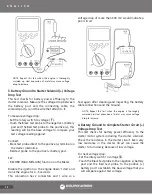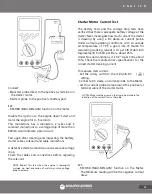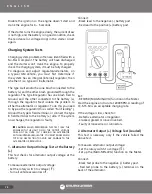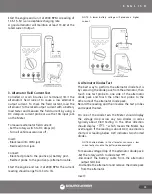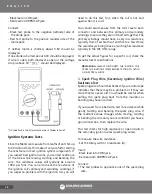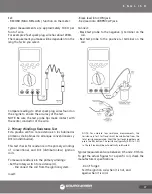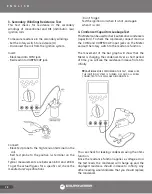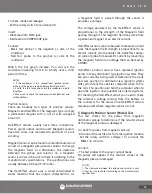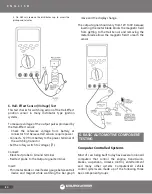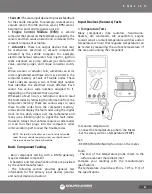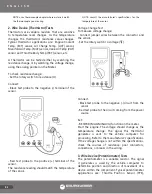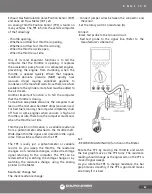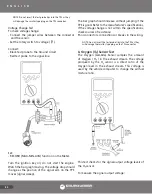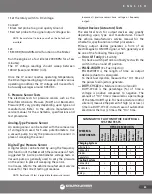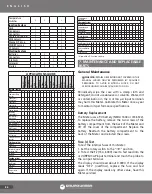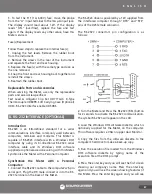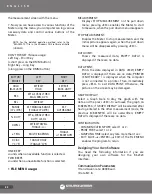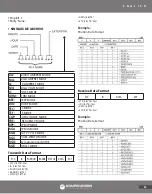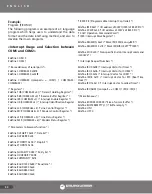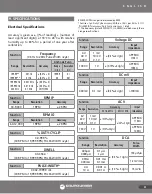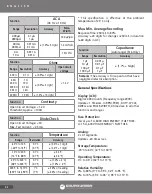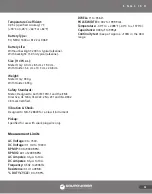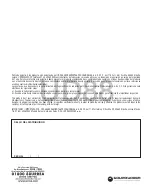
E N G L I S H
81
• Sensors:
These are input devices to provide feedback
for the vehicle computer. For example, coolant sensor,
vacuum sensor, throttle position sensor, RPM sensor,
barometric sensor and Oxygen sensor, etc.
• Engine Control Module (ECM):
A vehicle
computer that processes the feedback supplied by the
sensors and then sends an electronic command to the
relevant component actuators.
• Actuators:
These are output devices that may
be mechanical, electrical or vacuum components
activated by the vehicle computer. For example,
electro-mechanical carburetor, fuel injector, ignition
spark advancer, air pump, exhaust gas recirculation
valve, canister purger, and torque converter clutch,
etc.
When a sensor or actuator fails, sometimes an error
code is generated and these errors are stored in the
computer memory as Fault or Trouble Codes. These
Fault Codes are usually a two or three digit number
that identifies the electrical circuit affected. Each
sensor has various code numbers assigned to it,
depending on the problem that occurred.
Whenever a fault occurs, a technician is able to read
the fault codes by retrieving the information from the
computer’s memory: There are various ways to read
these trouble codes from the computer’s memory:
some vehicles display the fault codes using the digital
clock on the dash, others user the tachometer and
many use a blinking light to signal the fault codes.
However, today’s most vehicles require a code reader
or scan tool that plugs into the computer’s serial
communication port to read the trouble codes.
NOTE: For specific instructions on how to retrieve trouble
codes from any vehicle computer system, you should consult
the service manual for the specific vehicle.
Basic Component Testing
- Basic component testing with a DMM generally
requires detailed component .
- Schematics and test specifications that are provided
by the vehicle manufacturer.
- The following section provides general test
information for the primary input devices (sensors)
and output devices (actuators).
Input Devices (Sensors) Tests
1. Temperature Tests
Many components (like radiators, transmission,
heaters, A/C condensers, A/C evaporators, engine
coolant sensors, coolant temperature switches and air
temperature sensors) that regulate temperature can
be tested by measuring the surface temperature of
the area surrounding the component.
To measure temperature:
- Connect the temperature probe to the Meter.
- Set the rotary switch to temperature (TEMP).
Set:
- RECORD (MAX-MIN-AVG) function on the meter.
Touch:
- The end of the temperature probe direct to the
surface area near the radiator inlet.
Compare your readings with the manufacturer’s
specifications.
The temperature should be within ± 10°F (± 5°C) of
the specifications.
Summary of Contents for UD88
Page 94: ...94 NOTAS NOTES ...
Page 95: ...95 NOTAS NOTES ...

